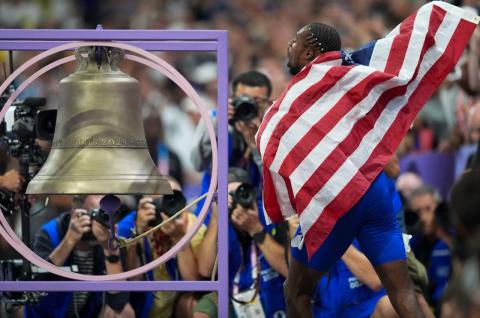
The Paris Olympics introduced a unique tradition that has captured the attention of fans and athletes alike: the Victory Bell. After crossing the finish line and securing a gold medal, track and field athletes have the chance to ring a large trackside bell—a new, symbolic gesture that represents their triumph.
This tradition, though new to the Olympics, has deep roots in the world of athletics. Historically, bells have been used to signify important moments in sports, from signaling the start of a race to marking a world record. At the Paris Games, the bell serves as a personal celebration for athletes who have reached the pinnacle of their sport.

The idea is simple yet profound. After the intensity of competition, the bell offers athletes a moment of reflection and jubilation. It allows them to share their victory with the crowd in a tangible way, creating a powerful connection between the athlete and the spectators. The sound of the bell resonates through the stadium, a clear and triumphant signal that a new champion has been crowned.
For many athletes, like Gabby Thomas, the 200-meter Olympic champion, ringing the bell is a moment of pure joy and acknowledgment of their hard work and dedication. It’s a chance to bask in the glory of their achievement, a victory lap of sorts that echoes beyond the track.

This new tradition adds a unique flavor to the Games, blending the old with the new. As the Olympics continue to evolve, the Victory Bell is a reminder of the importance of tradition, celebration, and the universal joy of sport. Whether it becomes a permanent fixture in future Games remains to be seen, but for now, it stands as a symbol of excellence and the sweet sound of success.
For more content find us via the app store:
Discover More Content





